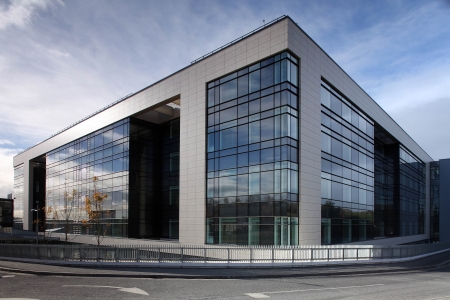The first patients have moved into a new ward block at Ulster General Hospital.
BakerHicks recently completed the latest phase of the redevelopment, taking one of the largest hospital revamp projects in Europe one step closer to completion.
The seven-storey Inpatient Ward Block (IWB) has 288 single bedrooms and is part of the Phase B Redevelopment Programme, which will provide the Ulster Hospital with two new ward blocks.
BakerHicks is providing the civil and structural design for the scheme, which began in 2013 and has attracted £232m of investment.
The hospital environment provided a number of unique challenges that the structural engineers had to take into account.
Work had to be carefully co-ordinated and conducted without impacting ongoing acute services and access for the public and blue-light routes.
There was a particular focus on vibration analysis so as not to interfere with sensitive imaging and scanning equipment, operations, or patient care.
Detailed planning and sequential implementation was therefore critical, as well as close consultation with the client and construction partners.
Information sharing was key, supported by the use of 3D modelling. BakerHicks also provided an on-site engineer as a dedicated point of contact.
The design of the 30,000sq m building focuses on patient comfort, with 12 wards across four levels comprising of 100% single, en-suite bedrooms, which provide patients with maximum privacy levels.
The IWB also features four operating theatres, an endoscopy suite, cardiac cath lab, aseptic suite, a pharmacy department, and a cafe.
Robbie McKillop, director for the public sector at BakerHicks, said: “Hospitals are very design-intensive projects, with very specific requirements that need close collaboration and co-ordination with regards to planning and delivery.
They also tend to be heavily-serviced buildings in terms of M&E provision, which demands the highest levels of skill, expertise and experience in terms of design.
“This complex and large-scale project was particularly challenging as it had to be completed in a live acute hospital environment while maintaining access to essential clinical services.”
Work on the next element of the capital redevelopment project - Phase B3 - commenced in April 2016.
This will see the design and construction of the new acute services block (ASB) which will house a new emergency department, inpatient imaging and specialist wards.
A temporary link bridge connecting the IWB to the critical care complex will also be erected while the ASB is being built, allowing patients and staff continued ease of access between the two buildings.

The hospital is currently undergoing major redevelopment




